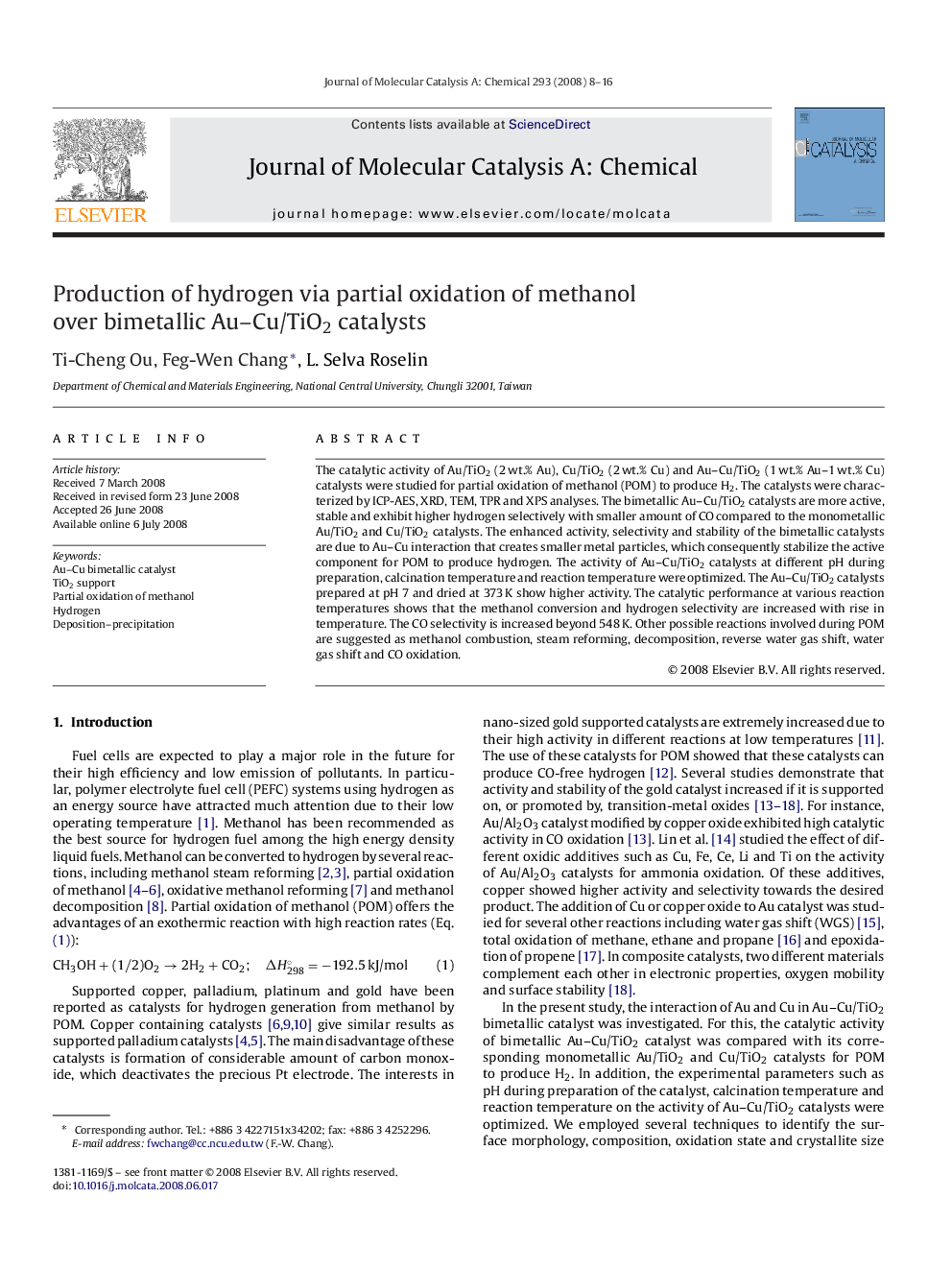| کد مقاله | کد نشریه | سال انتشار | مقاله انگلیسی | نسخه تمام متن |
|---|---|---|---|---|
| 67911 | 48498 | 2008 | 9 صفحه PDF | دانلود رایگان |

The catalytic activity of Au/TiO2 (2 wt.% Au), Cu/TiO2 (2 wt.% Cu) and Au–Cu/TiO2 (1 wt.% Au–1 wt.% Cu) catalysts were studied for partial oxidation of methanol (POM) to produce H2. The catalysts were characterized by ICP-AES, XRD, TEM, TPR and XPS analyses. The bimetallic Au–Cu/TiO2 catalysts are more active, stable and exhibit higher hydrogen selectively with smaller amount of CO compared to the monometallic Au/TiO2 and Cu/TiO2 catalysts. The enhanced activity, selectivity and stability of the bimetallic catalysts are due to Au–Cu interaction that creates smaller metal particles, which consequently stabilize the active component for POM to produce hydrogen. The activity of Au–Cu/TiO2 catalysts at different pH during preparation, calcination temperature and reaction temperature were optimized. The Au–Cu/TiO2 catalysts prepared at pH 7 and dried at 373 K show higher activity. The catalytic performance at various reaction temperatures shows that the methanol conversion and hydrogen selectivity are increased with rise in temperature. The CO selectivity is increased beyond 548 K. Other possible reactions involved during POM are suggested as methanol combustion, steam reforming, decomposition, reverse water gas shift, water gas shift and CO oxidation.
Hydrogen production via partial oxidation of methanol was studied over Au–Cu/TiO2 (1–1 wt.%) and Au/TiO2 (2 wt.%) and Cu/TiO2 (2 wt.%) catalysts. The Au–Cu/TiO2 catalyst exhibits higher activity, stability and selectivity towards the desired product. This is due to Au–Cu interaction that creates smaller metal particles and stabilizes the active Au species for POM to produce hydrogen.Figure optionsDownload as PowerPoint slide
Journal: Journal of Molecular Catalysis A: Chemical - Volume 293, Issues 1–2, 1 October 2008, Pages 8–16